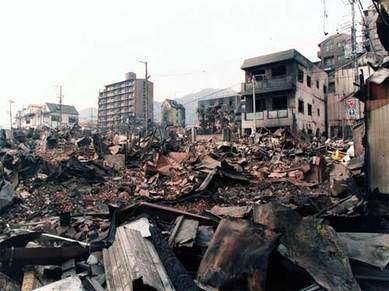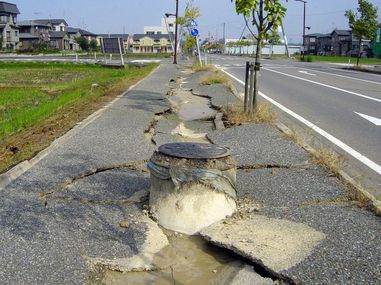Earthquakes are a devastating thing that happens due to the movement of Earth's plates. They can crack and change Earth's surface as if it were a piece of paper. How does this happen exactly? Well, I'm glad you asked!(:
An earthquake is a strong vibration that travels through the earth's crust. Volcanic eruptions, underground explosions and collapsing structures are only a few things that can trigger an earthquake. However, most erathquakes are caused by the way Earth's plates move. Even though we only hear of extreme earthquakes happening every once in a while, they're actually occuring everyday.
The study of earthquakes is called seismology. It came to be when scientist's formed the theory of Plate Tectonics. Plate tectonics explain how the continents change position over time. The basic theory states that the surface layer fo the earth, the lithosphere, is comprised of many plates that slide over the athenosphere layer. At the boundaries between these huge plates of soil and rock, three different things can happen: Plates can move apart, they can come together, or they can slide against each other.
The study of earthquakes is called seismology. It came to be when scientist's formed the theory of Plate Tectonics. Plate tectonics explain how the continents change position over time. The basic theory states that the surface layer fo the earth, the lithosphere, is comprised of many plates that slide over the athenosphere layer. At the boundaries between these huge plates of soil and rock, three different things can happen: Plates can move apart, they can come together, or they can slide against each other.
Coming Together- If two plates are coming together, typically, one plate will slide under the other. The bottom plate then sinks lower into the mantle where it begins to melt. At some boundaries where two plates meet, neither plate is in the right position to slide under the other, so they both push against each other to form mountains. The lines where plates push toward each other are called convergent plate boundaries.
Moving Apart- If two plates are moving apart from each other, hot, molten rock flows up from the layers of mantle below the lithosphere. This magma flows out of the surface (mainly at the bottom of the ocean) and is then called lava. As the lava cools, it hardens to form new material, filling the gap that would be there. This is called a divergent plate boundary.
Sliding Against- At other boundaries, plates simply just slide against each other. For example, one can move north and one can move south. These are known as transform boundaries. While the plates don't directly drift into each other, they're still pushed tightly together. A very large amount of tension builds at the boundary.
Where these plates meet, they form faults, which are breaks in the earth's crust where the blocks of rock on each side are moving in different directions. Earthquakes are much more common along fault lines than they are anywhere else on the planet!
The initial break that creates a fault is the main source of earthquakes. Most earthquakes occur around plate boundaries, creating fault zones (Groups of interconnected faults.) In a fault zone, the release of energy at one fault may increase the potential energy in another nearby fault, which leads to earthquakes. This is one of the reasons why more than one earthquake may occur in an area over a short period of time.
However, every now and then, earthquakes do occur in the middle of plates.
The initial break that creates a fault is the main source of earthquakes. Most earthquakes occur around plate boundaries, creating fault zones (Groups of interconnected faults.) In a fault zone, the release of energy at one fault may increase the potential energy in another nearby fault, which leads to earthquakes. This is one of the reasons why more than one earthquake may occur in an area over a short period of time.
However, every now and then, earthquakes do occur in the middle of plates.


